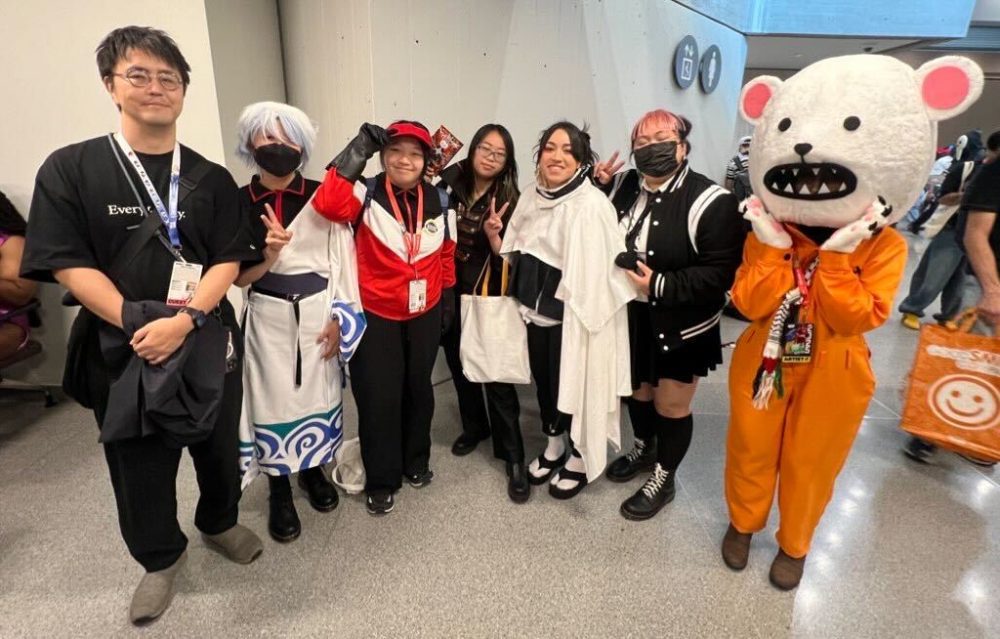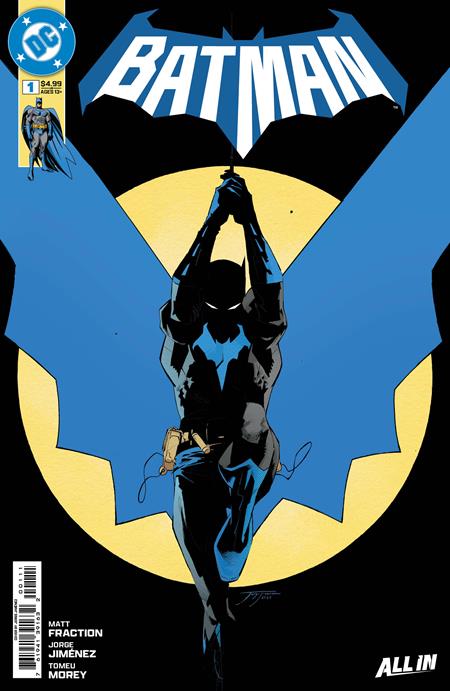At this year’s AnimeNYC, in a Q&A-style panel moderated by manga expert Deb Aoki and presented by The Japan Foundation, Weekly Shonen Jump editor-in-chief Yu Saito answered dozens of questions about every aspect of running the fan-favorite magazine.
 Photo taken by Deb Aoki, used with permission.
Photo taken by Deb Aoki, used with permission.Aoki opened the conversation by explaining clearly what Shonen Jump is: a magazine launched in July 1968 by Shueisha. Today, it launches a new issue every Monday, and publishes over a million copies per issue. “As a point of comparison, the most successful American superhero comic today sells around a hundred thousand copies per issue,” Aoki said.
To which Saito responded, “But I love Batman!”
Weekly Shonen Jump is the only weekly magazine in the Jump group of magazines, which also include Jump SQ, Young Jump, and Jump GIGA. As the Weekly Shonen Jump magazine is the most representative, titles from other Jump magazines are often published in English as part of Weekly Shonen Jump.
Saito has been editor-in-chief of Weekly Shonen Jump for about a year now, but he’s been with the magazine for much longer. After getting hired by Shueisha straight out of college in 2005, Saito oversaw dozens of series, taking over Gintama, Hunter x Hunter, and World Trigger partway through their runs and helping launch Kuroko’s Basketball and Nisekoi. He was excited to see cosplay of characters from the series he had worked on in the audience, and remarked that conventions in Japan usually do not have as much of an emphasis on cosplaying. Saito honed his skills as an editor through conversations with creators and other editors.
When asked to share a funny story about his time working with mangaka directly, Saito related an anecdote regarding the creation of Gintama by Hideaki Sorachi. The magazine was due to the printer, but an entire page of Sorachi’s new chapter was still blank. He finished drawing it in the half-hour taxi ride to the printer, with Saito holding the ink bottle to keep it from spilling in the taxi.
On the subject of whether manga about making manga (such as Bakuman and Monochrome Days) are accurate, Saito mentioned they often depict editors as villains, and stated that Taiyo Matsumoto’s Tokyo These Days is the most accurate manga about both mangaka and their editors. At Jump, the editor is often the intermediary between the publisher and the demands of external partners, such as anime companies adapting manga from the magazine, as most mangaka don’t have the time to be hands-on for an anime adaptation. Saito said the hardest part of being an editor is when series you expect to be hits end up falling flat.
The panel included both questions from Aoki and questions submitted in advance by Shonen Jump fans online. Aoki asked, “What makes Jump special?” to which Saito responded that Jump’s willingness to take on rookies and inexperienced creators in their search for new and different series, as well as their responsiveness to reader demands.
“We publish what is interesting to us now.” He stated that Jump editors don’t fixate on data or trends and go more off instincts for what they believe will hit.
Saito took care to mention that while different editors motivate their creators differently, but everyone gets a lot of motivation from fan letters, especially handwritten letters from overseas fans that took the time to learn Japanese. His vision for Jump includes more new hits, prioritizing new creators, and creating the best workplace environment and the best organization system possible.
 Photo taken by Deb Aoki, used with permission.
Photo taken by Deb Aoki, used with permission.After the panel concluded, Saito took a photo with the cosplayers dressed as characters from the series he oversaw.
For more coverage on AnimeNYC 2025, you can find it right here in the AnimeNYC 2025 archive on The Beat!




















 English (US) ·
English (US) ·